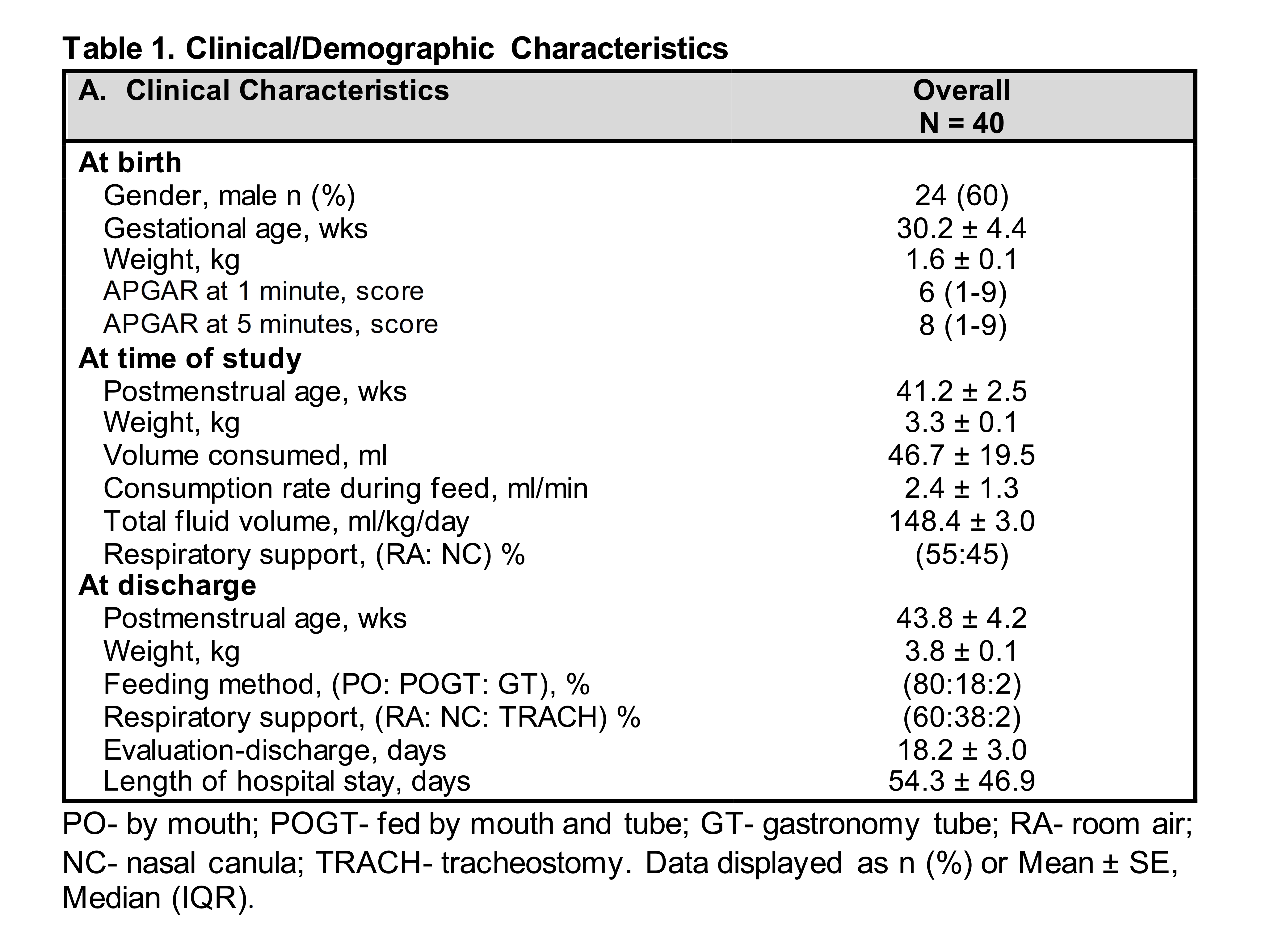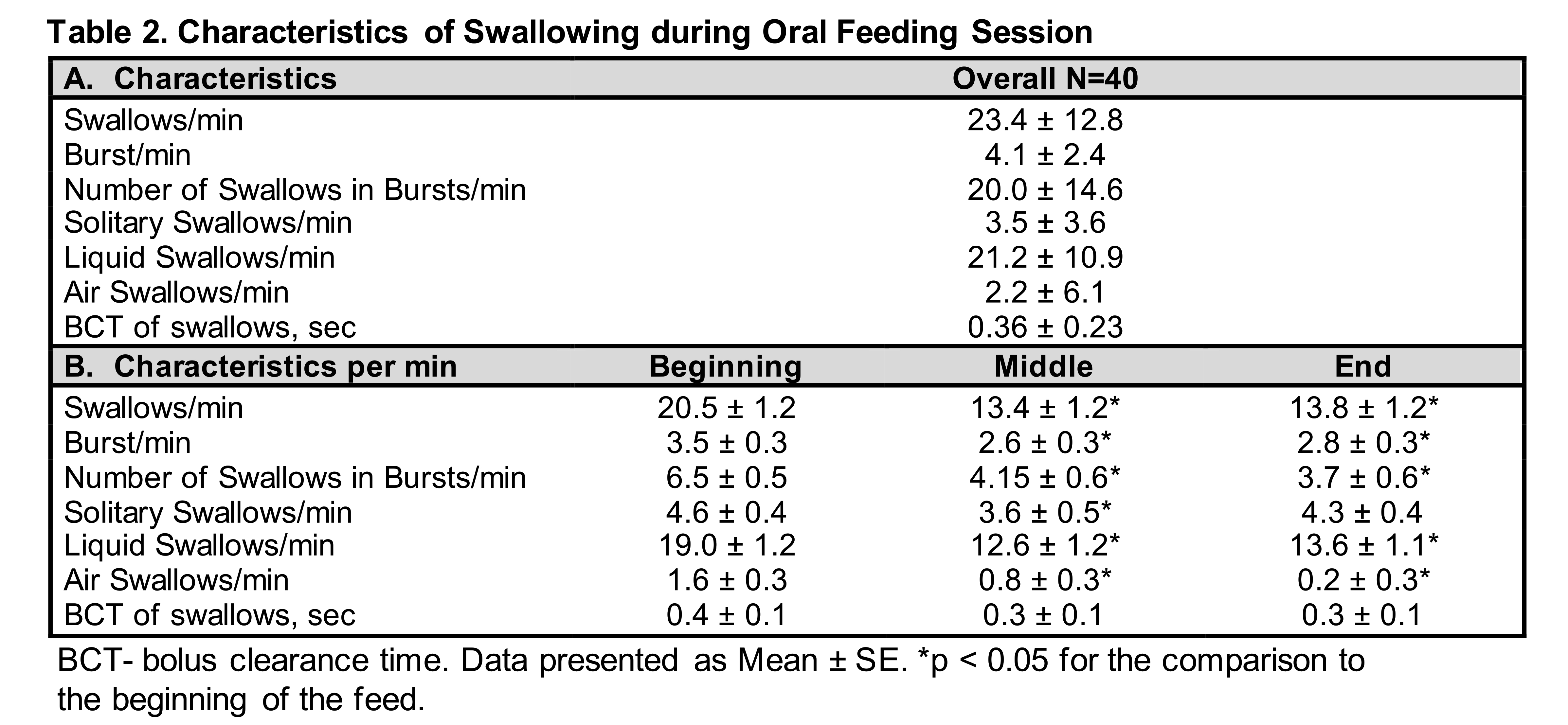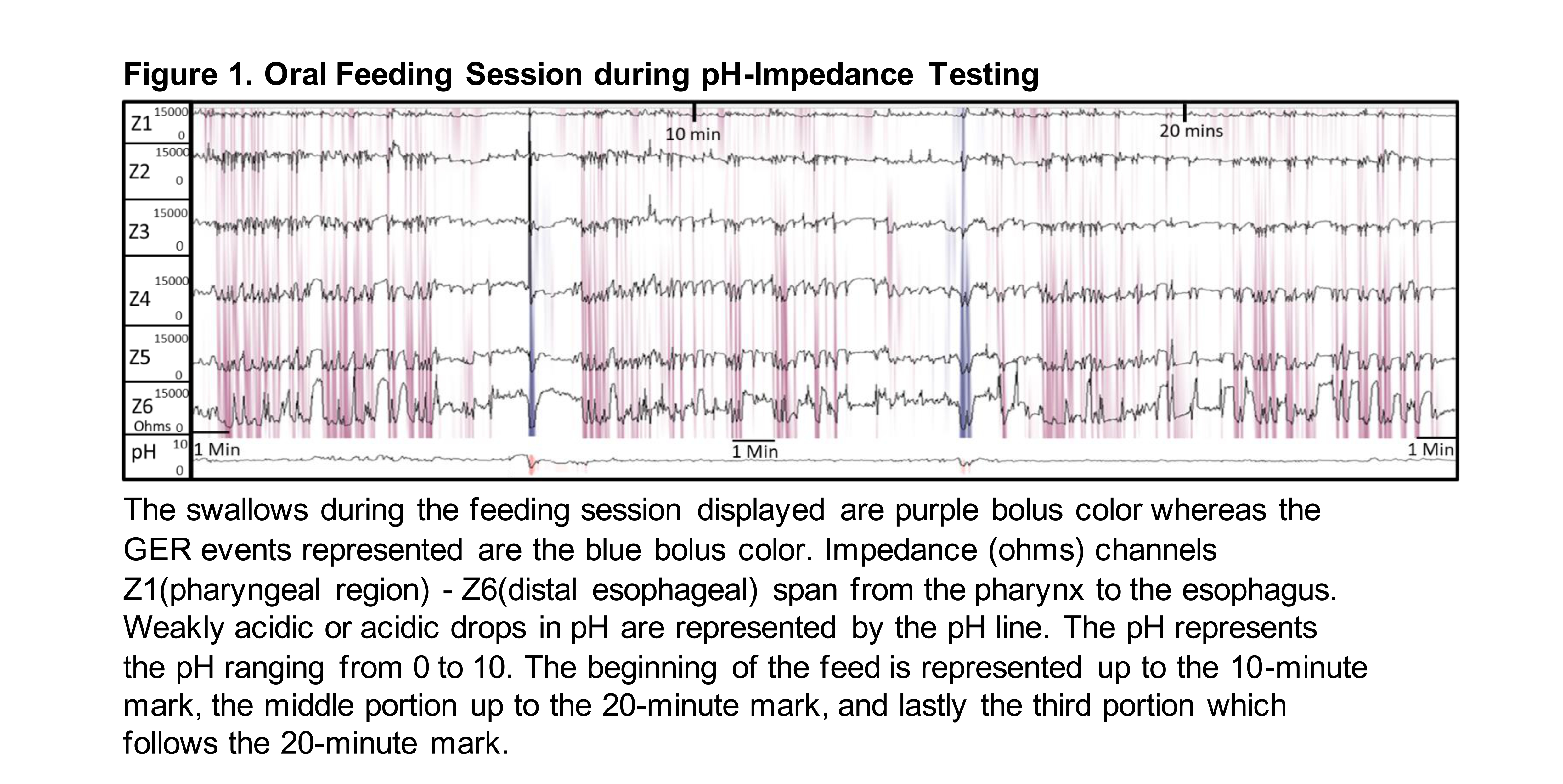Neonatology
Session: Neonatal General 4: Nutrition, Feeding, and Growth
97 - Characterizing Swallowing and Bolus Transit Biomarkers During Oral Feeding in Infants Undergoing pH-Impedance Testing
Friday, May 3, 2024
5:15 PM - 7:15 PM ET
Poster Number: 97
Publication Number: 97.591
Publication Number: 97.591

Alexis Alexander, B.S (she/her/hers)
Research Assistant
Nationwide Children's Hospital
columbus, Ohio, United States
Presenting Author(s)
Background: Competency with oral feeding among infants is a common problem, and manifests as poor intake and or quality of feeding. Contributory factors underlie in oral-pharyngo-esophageal motility and airway adaptation concerns which may be influenced by comorbidities. Gastroesophageal reflux disease (GERD) is often considered, and pH-Impedance testing is an approach to characterize the presence, severity, extent, and clearance mechanisms. Generally, mealtime events are excluded in the pH-Impedance analysis, and the biomarkers of pharyngo-esophageal phases of swallowing and symptoms have not been characterized using these methods.
Objective: Our aim was to characterize swallowing and bolus transit biomarkers of oral feeding in NICU infants undergoing pH-Impedance testing for GERD evaluation.
In doing so, we offer mechanistic insights into potential non-invasive metrics of hunger, skills, endurance, and satiety. We hypothesize that the patterns of swallowing are distinct between the beginning, middle, and end of an oral feeding session.
Design/Methods: Data was extracted from infants who were fed by dedicated RNs for one focused oral feeding session during the pH-Impedance study wherein symptoms and vital signs were recorded continuously. Data were analyzed for the following metrics: swallowing frequency per minute (bursts/solitary swallows), solitary swallow rate, number of swallow-bursts, air swallows, liquid swallows, bolus clearance time (BCT), number GER events and symptoms, and oral feeding duration. Linear mixed models were used to characterize the oral feeding regulatory characteristics, and statistical comparisons were performed between the first, second, and last third of the feed.
Results: Hospitalized infants (N=40, 24 male, born at 30.2 ± 4.4 weeks gestation, evaluated at 41.2 ± 2.5 weeks postmenstrual age) underwent 24-hr pH-impedance testing for the evaluation of GERD. Oral feeding sessions during pH-impedance (Figure 1), averaged 19.3 ± 5.4 minutes. Demographics, clinical, and pH-impedance characteristics are shown in Table 1. Swallowing biomarker characteristics are shown in Table 2.
Conclusion(s): Swallowing-related characteristics during an oral feeding session can be defined during pH-impedance testing. Oral-pharyngo-esophageal motility and airway adaptation may be superiorly influenced with oral feeding practice.



